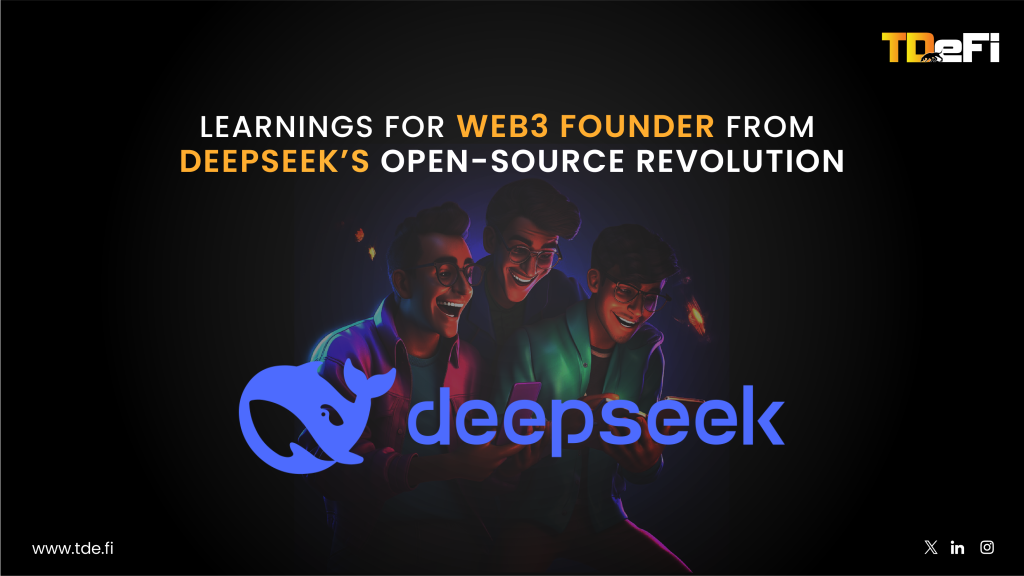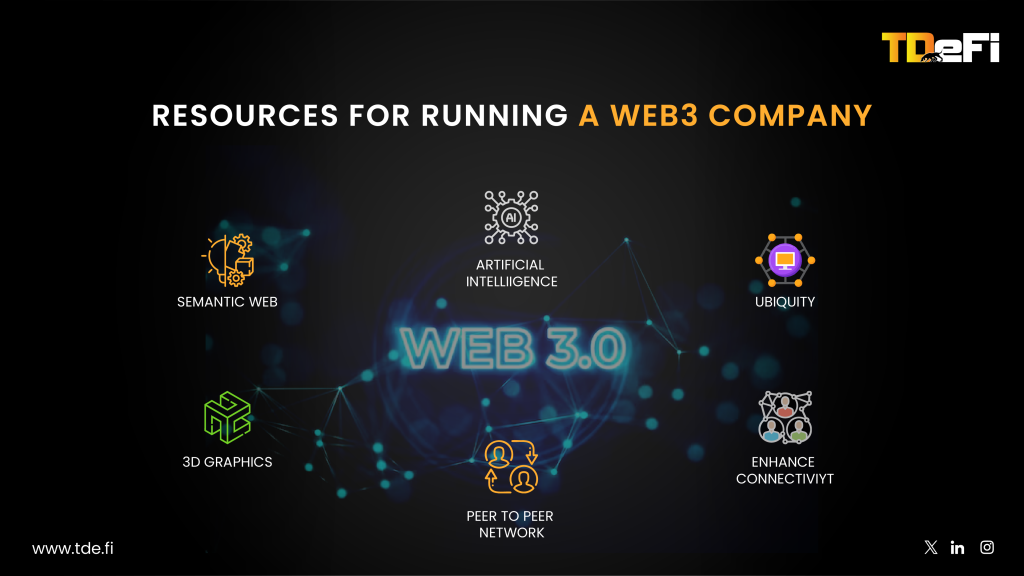TL;DR
Pivoting is a survival strategy, not a setback, for Web3 startups confronting market volatility, regulatory challenges, and shifting user behaviors. This blog provides a step-by-step guide to executing successful pivots—covering how to diagnose problems, identify growth opportunities, and align with community expectations. With real-world examples from Aave, Polygon, etc., and actionable insights backed by data, this blog equips Web3 founders with the tools to adapt strategically and succeed in an ever-changing ecosystem.
Intro
90% of Web3 startups fail within 2 years of launch—not because their ideas are flawed, but because they can’t adapt to market volatility, regulatory shifts, or user attrition. Pivoting isn’t a retreat, but a tactical recalibration to capture new liquidity pools, dodge regulatory hurdles, and align with tectonic technological shifts.
This blog offers actionable frameworks used by protocols like Aave, Polygon, and Helium to survive through bear markets, regulatory crackdowns, and DeFi 2.0 disruptions. Backed by latest data, TDeFi’s incubation insights, and battle-tested strategies, this is your layout to pivot with precision In Web3’s hot space.
Why Web3 Startups Must Pivot
A. Market Volatility
The Web3 market operates in boom-and-bust cycles. DeFi’s total value locked experienced a substantial decline in 2023, plummeting 80% from its November 2021 high of $180 billion to approximately $37 billion by October 2023. Projects that relied solely on speculative yields collapsed, while those that pivoted by integrating Real-World Assets (RWAs) or institutional DeFi solutions, flourished.
Example: Maple Finance transitioned from undercollateralized loans to overcollateralized lending pools and expanded into tokenized private credit markets. As of late 2024, the platform managed over $500M in institutional assets, leveraging blockchain technology to streamline global credit operations and drive adoption among traditional finance and DeFi users.
B. Regulatory Complexities
The Web3 regulatory landscape remains unpredictable as frameworks like the EU’s MiCA and the SEC’s intensified scrutiny reshape the industry. MiCA introduced strict licensing requirements across Europe, while SEC enforcement actions targeted unregistered securities and non-compliant stablecoins.
In response, Circle fortified USDC’s position as a fully reserve-backed stablecoin with monthly audits, ensuring transparency and shielding itself from regulatory risks. Another example is Binance pivoted away from BUSD after Paxos halted minting under NYDFS orders, transitioning toward compliance-first operations with alternative stablecoins like FDUSD.
Web3 founders must proactively engage with legal experts and audit your compliance risks. Non-compliance can lead to lawsuits or even shutdowns.
C.User Depletion & Community Decline
Web3 projects with low user engagement often struggle to survive, as retaining fewer than 1,000 daily active wallets (DAWs) significantly increases failure risk. A declining community often signals that a project’s value proposition no longer aligns with user needs.
Example: Axie Infinity faced this challenge during the play-to-earn crash but successfully pivoted by introducing free-to-play modes and NFT rentals through Axie Infinity: Origin. These efforts revived its DAUs from a low of ~400k in late 2022 to over 1M by late 2024. Similarly, Decentraland tackled engagement challenges by launching gamified experiences and partnering with brands like Samsung, whose 837X metaverse store became a flagship example of immersive brand collaboration.
The Web3 Pivot Framework
A. Diagnose the Problem
Before executing a pivot, founders need concrete signals that change is necessary. A pivot should be strategic, not reactionary, and should be based on clear metrics rather than emotions or market hype. Some critical indicators include:
- Liquidity Health:A significant and sustained TVL decline often signals waning market confidence or liquidity migration.
- Community Engagement: Low governance participation rates—often below critical thresholds—indicate user disengagement and can weaken project sustainability.
- Regulatory Threats: With evolving frameworks like MiCA and SEC scrutiny, preemptive adaptation is essential for projects facing potential regulatory challenges.
Web3 founders must use platforms like Token Termina. Itl provides powerful tools to benchmark your project against competitors using metrics like TVL-to-revenue ratios. If your ratio significantly underperforms relative to peers—indicating inefficiency—it may be time to reassess your fee structure or business model to stay competitive.
B. Identify Right Pivot Pathways
In Web3, the correct approach depends on a project’s current challenges, market positioning, and long-term vision. Below are the three most effective pivot pathways Web3 startups can explore.
Pathway 1: Entering a New Market (Vertical Shift)
Expanding into institutional markets offers stable capital inflows during volatile cycles.This is best for projects experiencing declining TVL, revenue, or liquidity flow.
When core revenue streams become unstable or a sector becomes saturated, shifting into adjacent or institutional-friendly markets can unlock new growth.
Example: Aave has expanded beyond traditional DeFi lending by launching institutional-focused products like Aave Arc and the GHO stablecoin. While Aave Arc provides permissioned liquidity pools for institutions under KYC/AML compliance, GHO serves as a decentralized stablecoin integrated across multiple chains. Together with new initiatives like Horizon targeting real-world assets, Aave is positioning itself as a leader in institutional DeFi adoption.
Pathway 2: Overhauling the Tech Stack
Technical limitations can cripple a Web3 startup, leading to network congestion, high transaction fees, and poor user experiences. Moving to next-gen blockchain solutions can be a game-changer.
This is best for Projects struggling with scalability, high fees, or technical bottlenecks.
Example: Solana introduced the Firedancer validator client, developed by Jump Crypto, to enhance network reliability and scalability. Designed to process up to 1 million transactions per second, Firedancer addresses historical issues with outages by introducing client diversity and advanced fault tolerance mechanisms. While still in testing phases, its rollout is expected to significantly reduce downtime and attract high-performance dApps like Drift Protocol, which already benefits from Solana’s robust infrastructure.
Pathway 3: Revitalizing the Community
Web3 success depends on community participation. If governance proposals fail to reach quorum or user engagement drops, a strategic community reboot can restore momentum.
This is best for projects facing declining governance participation and engagement.
Example: Curve Finance introduced vote-escrowed CRV (veCRV) tokenomics to incentivize long-term staking and governance participation. This model significantly increased user engagement and voting activity, becoming a benchmark for DeFi governance.
C. Execute the Pivot with Surgical Precision
Pivoting in Web3 is about executing the transition with precision, ensuring minimal disruption to your operations, community, and liquidity. Poorly managed pivots can erode user trust, kill liquidity, and damage brand reputation. To avoid these pitfalls, Web3 founders must approach execution as a phased process that balances technical adjustments, community alignment, and post-pivot optimization.
Here’s how you can execute a pivot successfully:
Phase 1: Pre-Pivot Preparation
Engage Your Community Early
Web3 startups are inherently community-driven. Pivoting without clear communication can alienate loyal users and token holders. Transparency is key to retaining trust during transitions. Founders should start by engaging their community through governance proposals, AMAs (Ask Me Anything sessions), and blog updates.
Example: MakerDAO’s pivot toward real-world asset (RWA) collateral involved extensive governance discussions and multiple Snapshot votes over six months. This transition aimed to diversify collateral types, with strong community support from MKR token holders.
Simulate Tokenomics Models
Tokenomics often require recalibration during pivots. For example, shifting to real-world assets or institutional markets may necessitate changes in staking rewards, token emissions, or burn mechanisms. Stress-testing these models ensures they align with long-term sustainability goals.
Example: Pendle Finance introduced time-decaying rewards through its AMM model to discourage mercenary capital and incentivize long-term liquidity providers. This approach has improved liquidity retention and reduced short-term exits.
Phase 2: Technical Migration
Leverage Cross-Chain Bridges for Seamless Asset Transfers
If your pivot involves expanding to new chains or transitioning to multi-chain ecosystems, secure cross-chain operations are critical. Liquidity fragmentation is a common challenge during migrations, but cross-chain bridges like LayerZero’s Omnichain Fungible Tokens (OFT) standard can mitigate this risk.
Example: Stargate Finance leveraged LayerZero’s OFT framework to enable seamless asset transfers across seven blockchains, achieving over $2 billion in cross-chain volume since its launch.
Adopt Modular Infrastructure Solutions for Scalability
Pivoting often requires upgrading your tech stack to handle new use cases or user demands. Modular infrastructure solutions like Celestia’s data availability layer reduce costs while improving scalability for protocols transitioning to multi-chain ecosystems.
Example: Celestia’s modular architecture significantly reduces data availability costs for rollups and Layer-2 solutions, enabling projects like EigenLayer to scale more efficiently.
Phase 3: Post-Pivot Growth
Monitor Key Performance Indicators (KPIs)
Post-pivot success depends on continuous optimization based on real-time data. Founders should track metrics like user retention rates, fee revenue growth, governance participation, and liquidity inflows to identify areas for improvement.
Example: Uniswap v3 introduced concentrated liquidity metrics post-launch, enabling LPs to allocate capital more efficiently within specific price ranges. Governance used these insights to optimize fee structures based on user behavior.
Allocate Contingency Funds for Mid-Pivot Corrections
Even the best-planned pivots can encounter unforeseen challenges. Allocating contingency funds ensures you have the flexibility to address issues like delayed migrations or unexpected user drop-offs.
Example: Solana allocated contingency funds to address scalability challenges revealed during the testing phase of its Firedancer validator client, developed by Jump Crypto. By redirecting resources mid-pivot, Solana ensured Firedancer’s upgrades could support high-performance dApps like Drift Protocol while maintaining seamless operations across its ecosystem.
Closing Thoughts
Web3’s most successful founders are those who adapt, evolve, and pivot strategically in the face of rapid market changes. Pivoting in Web3 demands careful execution that ensures every stakeholder feels confident in the transition. From aligning your community to implementing technical adjustments and optimizing post-pivot operations, the success of your pivot hinges on transparency, trust, and meticulous preparation.
At TDeFi, we work closely with Web3 startups to refine their tokenomics models, explore new growth paths, and navigate complex transitions. By leveraging our expertise in strategic frameworks and market insights, we help founders make informed decisions that align with their vision while adapting to market demands.
Ready to pivot your Web3 startup with confidence?
Apply now to explore how TDeFi can support your journey toward sustainable growth and innovation.





































































































